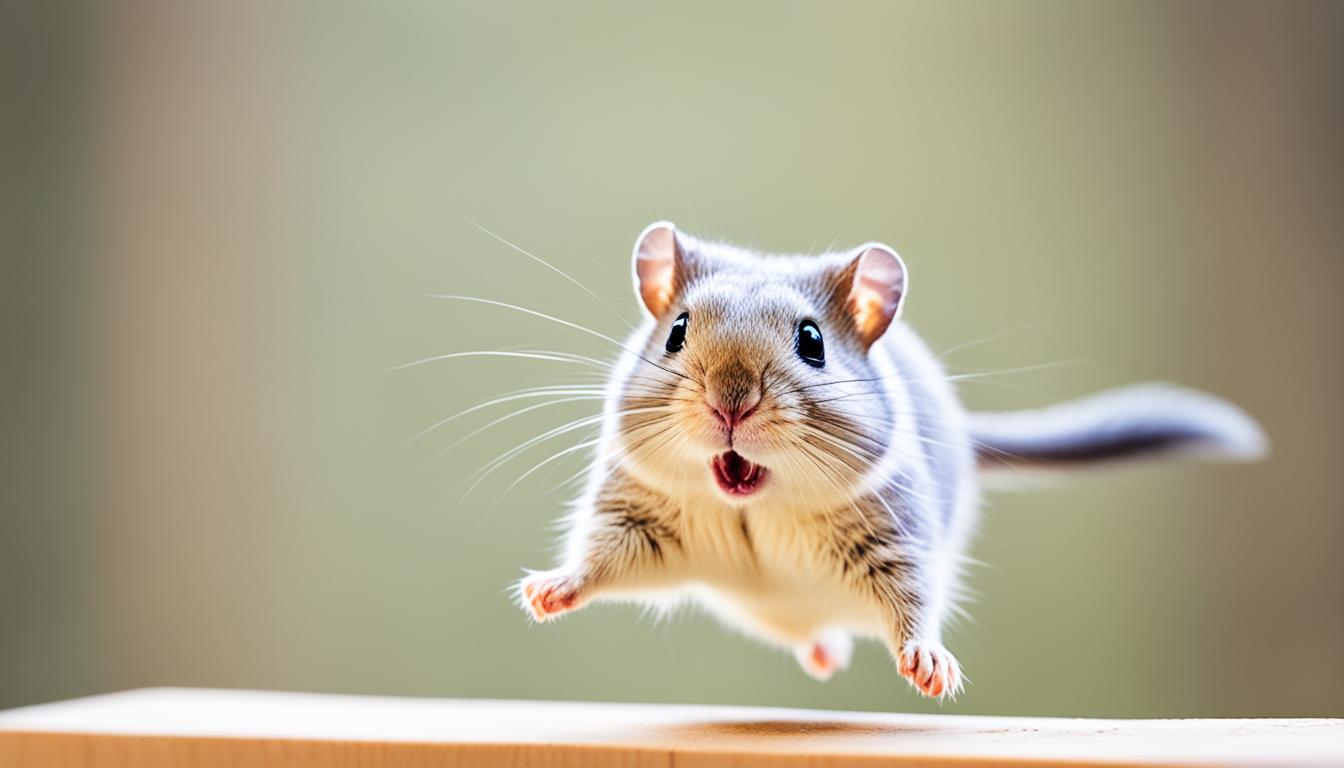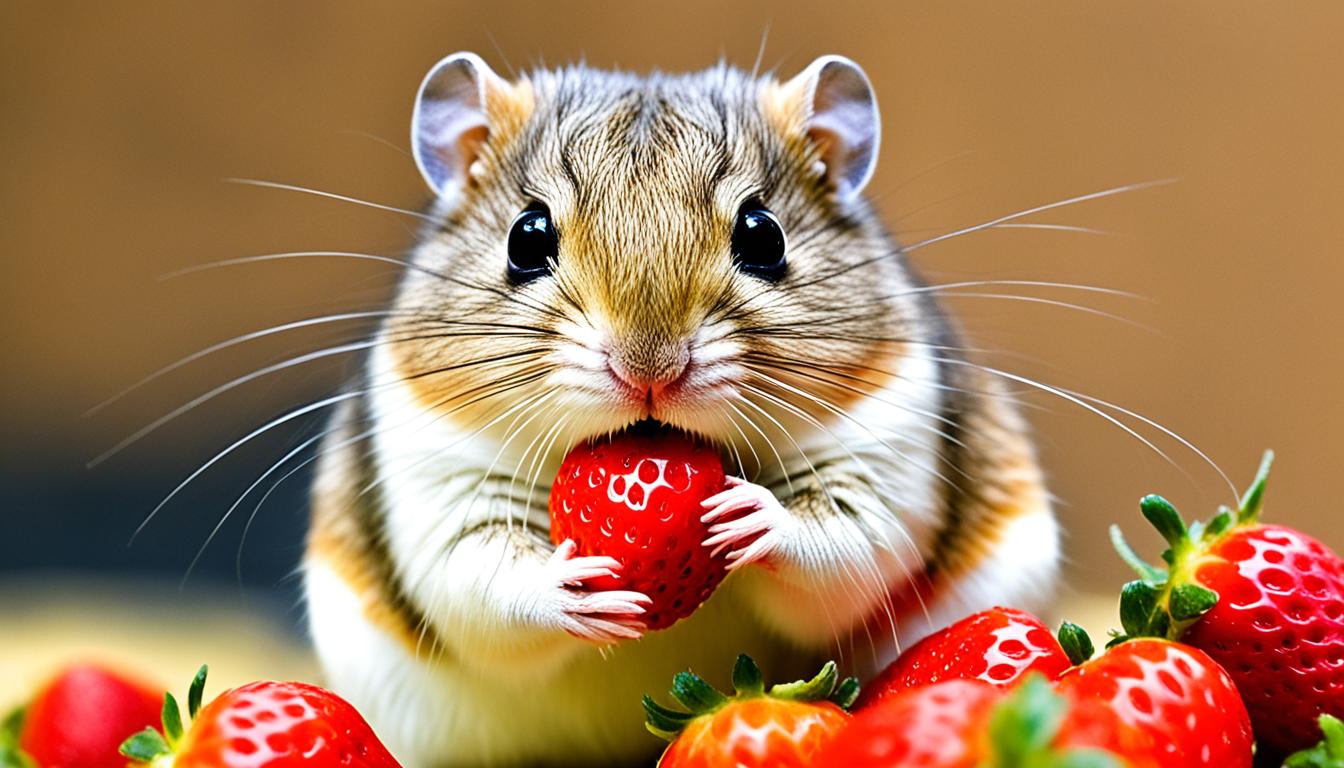To keep your gerbils happy and engaged, create DIY toys and mazes using safe materials like untreated wood, cardboard, or plastic. Hide treats inside tunnels, connect cardboard boxes, or make simple mazes with toilet paper rolls to encourage foraging and exploration. Add sensory elements like herbs or hanging fabric toys, and always verify everything is secure and toxin-free. Want more creative ideas? Keep exploring for more fun and enriching options!
Key Takeaways
- Use household items like cardboard boxes, tubes, and plastic cups to create simple, interactive mazes for your gerbils.
- Incorporate food puzzles by hiding treats inside natural materials or homemade tunnels to promote foraging.
- Build climbing structures from safe materials such as untreated wood or fabric strips to encourage activity.
- Regularly rotate toys and maze components to maintain your gerbils’ curiosity and mental stimulation.
- Ensure all DIY toys are free of sharp edges, toxic substances, and small parts to keep your gerbils safe.

Are you looking for fun and affordable ways to keep your gerbil entertained? Creating DIY toys and mazes is a fantastic way to provide mental stimulation and physical activity without breaking the bank. One of the best ways to engage your gerbil is through food enrichment. Instead of simply placing food in a bowl, hide treats or small portions of their favorite snacks inside homemade tunnels or under shredded paper. This encourages your gerbil to forage, mimicking their natural behavior, and keeps them busy for extended periods. When designing these activities, always prioritize habitat safety. Use non-toxic, pet-safe materials like untreated wood, cardboard, or plastic that won’t harm your little friend if they chew or gnaw on them. Avoid any items with sharp edges, small parts that could be swallowed, or toxic paints or glues. Creating a safe environment is essential to prevent accidents and ensure your gerbil’s well-being. Incorporating elements that reflect their natural environment supports their behavioral needs and promotes overall health. Additionally, understanding the importance of robotics integration in modern pet care can inspire innovative ways to enhance your gerbil’s habitat and enrichment tools.
To build a simple maze, you can repurpose household items such as empty toilet paper rolls, small cardboard boxes, or plastic cups. Connect them with tunnels or passages made from cardboard tubes or folded paper, making sure each connection is secure and smooth so your gerbil can navigate easily without getting stuck or hurt. Incorporating food puzzles by hiding bits of fruit, grains, or seeds inside these structures encourages your gerbil to explore and problem-solve. As your gerbil becomes more familiar with the maze, you can expand it or add new sections to keep things interesting. Remember to keep the maze shallow enough for your gerbil to explore comfortably and always supervise their playtime to ensure they don’t chew or ingest anything harmful. Providing variety in toys and structures keeps their environment stimulating and prevents boredom. Additionally, adding natural materials like small twigs or hay can enrich their habitat and promote foraging behaviors.
Furthermore, using scented objects such as herbs or spices can stimulate your gerbil’s sense of smell and encourage exploration. In addition to mazes, you can create climbing structures or hanging toys from safe materials. For example, tie strips of fabric or paper from the top of the enclosure to encourage climbing, or attach small wooden blocks for gnawing. These simple additions not only promote natural behaviors but also help prevent boredom. Regularly rotating or modifying the toys and maze setups keeps your gerbil curious and engaged, making sure they don’t lose interest. Always check the materials for damage or wear before reintroducing them, and clean everything thoroughly to maintain habitat safety. With a little creativity and attention to safety, you can craft engaging, homemade toys and mazes that provide endless entertainment, mental stimulation, and physical exercise, all while strengthening your bond with your tiny companion. Including elements inspired by Native American dance traditions can also add a cultural dimension to your creative play setups.
Frequently Asked Questions
How Often Should I Replace or Clean DIY Gerbil Toys?
You should clean your gerbil toys regularly to maintain a healthy environment. Follow a consistent cleaning schedule, such as once a week, to prevent bacteria buildup. Keep in mind that material longevity varies; some toys may need replacing sooner if they become worn or damaged. Regularly inspect your DIY toys for signs of wear and tear, and clean or replace them as needed to make sure your gerbils stay safe and happy.
Are Natural Materials Safer for Homemade Gerbil Toys?
When considering natural materials for homemade gerbil toys, safety is key. Natural materials like untreated wood, hay, or paper are generally safer because they’re free from chemicals and dyes that could harm your gerbil. Always check for sharp edges or small parts that could cause injury or choking. Prioritize non-toxic, chew-safe options, and regularly inspect toys for wear and tear to guarantee ongoing safety considerations are met.
Can DIY Toys Replace Commercial Gerbil Products Entirely?
You might wonder if DIY toys can fully replace commercial gerbil products. While DIY creativity allows you to craft stimulating, safe toys tailored to your gerbil’s needs, they might not always meet the same safety standards as store-bought options. Prioritize gerbil safety by using non-toxic, natural materials and regularly inspecting homemade toys. Combining DIY ideas with commercial products offers a balanced approach, ensuring your gerbil stays healthy, happy, and engaged.
What Size Should the Mazes or Toys Be for Small Gerbils?
When creating toys or mazes for your small gerbil, focus on their size and comfort. Typically, a gerbil size of about 4 inches in length guides your design. Keep toy dimensions safe—at least 1.5 times their body length—to prevent choking or injury. Make sure openings are small enough to prevent escapes but large enough for easy navigation. Always observe your gerbil’s interaction to ensure the toy accommodates well.
How Can I Prevent My Gerbils From Chewing Destructive Materials?
Think of your gerbils’ chewing habits as a river carving through rock; it’s natural but can become destructive. To prevent this, provide plenty of safe chew toys and rotate them regularly. Avoid giving them materials like plastic or untreated wood, which trigger destructive behavior. Engage them with enriching activities and monitor their environment. This way, you help channel their natural instincts positively, reducing damage and fostering healthier habits.
Conclusion
Creating DIY toys and mazes for your gerbil not only keeps them entertained but also stimulates their natural curiosity and agility. While some believe these homemade activities can boost your pet’s happiness and health, research suggests mental stimulation plays a vital role in their well-being. By investing time in fun, homemade toys, you’re not just saving money—you’re enriching your gerbil’s life and potentially extending their lifespan through enhanced mental engagement.










